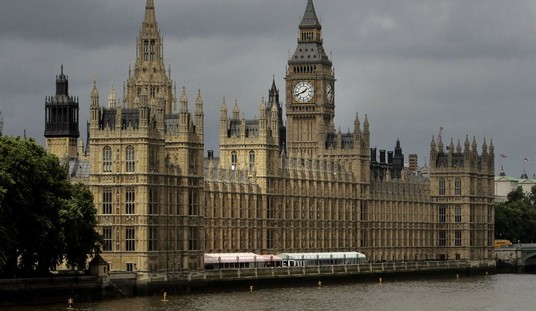Getting a lower tax refund than usual this year? Kamala Harris argued on Monday that the drop in average refunds means Donald Trump hiked taxes on the middle class:
The average tax refund is down about $170 compared to last year. Let’s call the President’s tax cut what it is: a middle-class tax hike to line the pockets of already wealthy corporations and the 1%.
— Kamala Harris (@KamalaHarris) February 11, 2019
Harris wasn’t the only person confused by this outcome to reductions in tax rates, but she may have been the only potential 2020 presidential candidate to argue that reductions are tax hikes. Washington Post fact-checker Glenn Kessler branded this hot take as “nonsensical and misleading,” awarding Harris the full four Pinocchios. Yes, the tax refund average has dropped, but that’s because four out of five earners didn’t update their W-4 for withholding after the tax cuts took effect — as they were warned to do.
Even with that aside, tax refunds don’t reflect tax liability. The point of the tax cuts isn’t to end up with big refunds, it’s to pay less in taxes. And that’s what happened with the tax cuts enacted in December 2017:
When both the Joint Tax Committee and the Tax Policy Center looked at the impact of the tax bill, they concluded that in 2018, most people would see an overall reduction in taxes. The Tax Policy Center found that 80.4 percent of all tax payers would have a tax cut, compared with about 5 percent experiencing a tax increase.
In the middle quintile, 91 percent would get a tax cut, averaging about $1,090, with 7.3 percent facing a tax increase averaging about $910.
Chris Edwards of the libertarian Cato Institute has argued that both the Joint Tax Committee and the Tax Policy Center present a misleading picture because they include payroll taxes — and the Trump tax legislation left payroll taxes untouched. When you exclude payroll taxes, it appears as though the largest share of the tax changes goes to the middle-income quintile, according to his calculations.
However, because the withholding tables were adjusted to reflect that, people kept more of their own money in each paycheck. If they didn’t adjust their W-4s to keep up higher payments each paycheck to the IRS, the amount of the refund would obviously be smaller. That’s actually a good thing, Kessler points out; wouldn’t you rather have your own money all along than give the IRS an interest-free loan each year?
A spokesperson for Harris argued that she was talking about the “long-term effect” of the tax cut, but that’s nonsense for two reasons. Kessler points out one of them — the expiration of the tax cuts in year eight. Congress can fix that at any time by extending the tax rates or making them permanent. This response is also nonsense because Harris was specifically citing the average refund for tax year 2018, which is clearly a short-term effect.
Kessler lowers the boom in his conclusion:
This tweet combines two factoids into a highly misleading package. Yes, tax refunds are smaller, based on preliminary data. And, yes, in the long run, the Trump tax cut raises taxes on the middle class — if you make the probably unrealistic assumption that Congress will not act to rescue tax cuts for individuals.
But Harris presented these facts without nuance or qualification, making it appear as though the smaller tax refunds were evidence of a tax hike on the middle class. In reality, the size of a tax refund reflects nothing about the size of a tax cut or tax increase — and at least in 2018, the vast majority of middle-class Americans can expect to pay less in taxes as a result of the Trump tax law.
If Harris can’t figure out that reductions in rates and liabilities are tax cuts rather than tax hikes, and if her staff can’t distinguish between short- and long-term effects, then perhaps they shouldn’t be put anywhere near the White House.








Join the conversation as a VIP Member